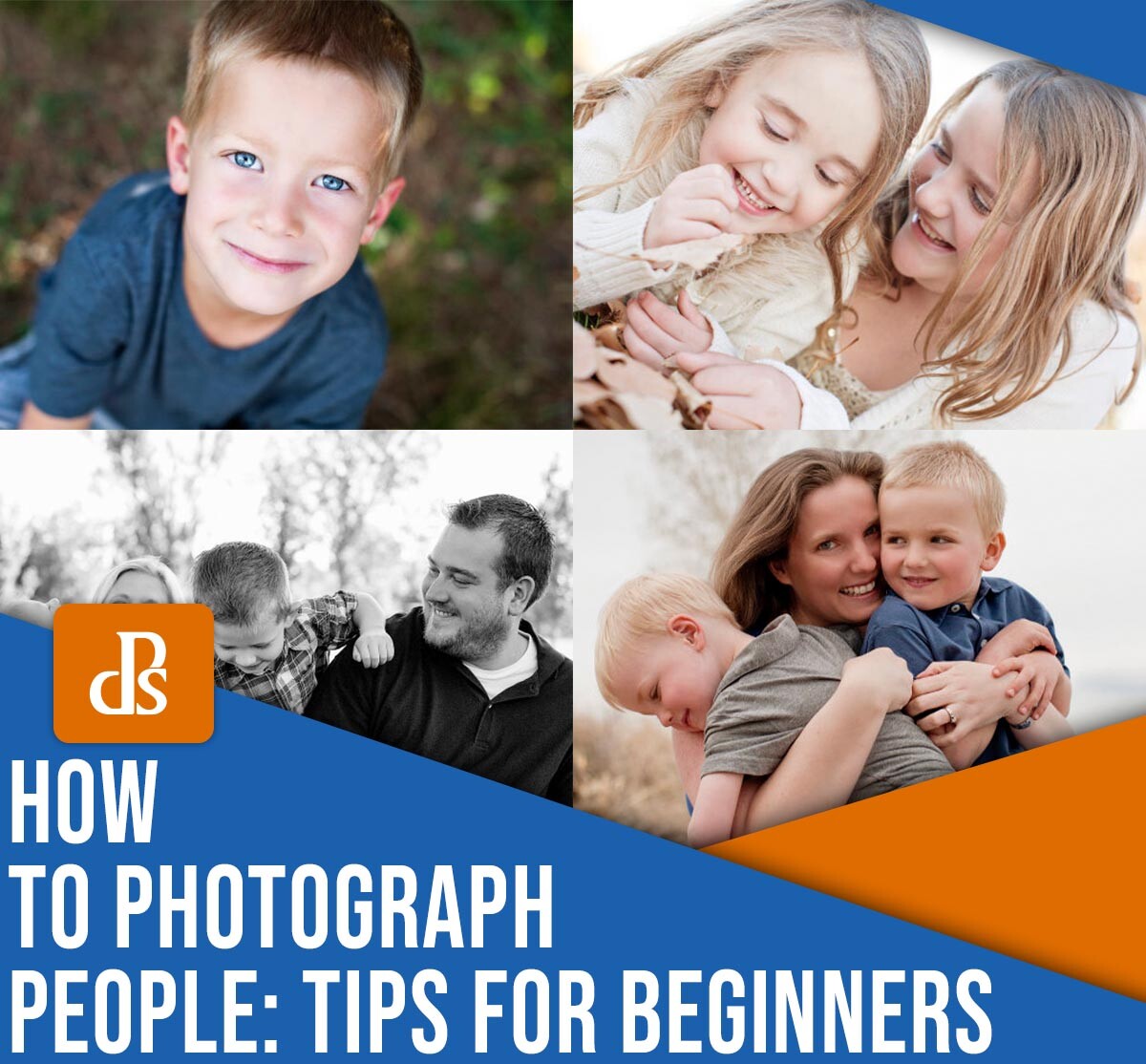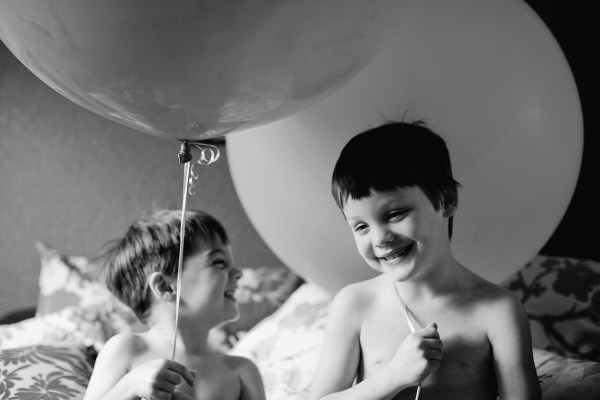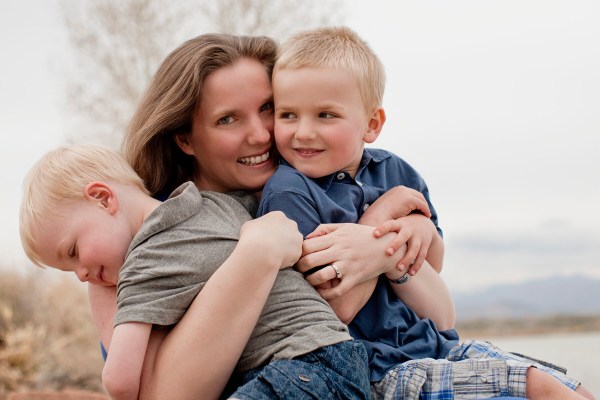
Struggling to capture top-notch photos of people? You’re not alone.
People photography can be hard. Posing, keeping the subject relaxed, choosing the right settings – it’s enough to make anyone’s brain hurt! Fortunately, I’m a veteran portrait shooter, and in this article, I share my absolute best tips for how to photograph people like a pro.
Below, you’ll discover:
Ready to level up your people photography skills? Then let’s do this!
1. Be realistic
If you’re just starting out photographing people, don’t expect too much of yourself or over-promise your abilities.
As long as you’re knowledgeable about camera settings, lighting, composition/posing, and editing, you’ll get some good images, and your clients will likely be pleased. But don’t claim that you’ll be able to produce dozens of high-quality shots; if you do, you risk frustrating your clients instead.
And if you have absolutely zero practice photographing in a certain situation, tell your client. If you’ve been asked to shoot a wedding, for instance, explain your lack of experience – just in case things go sideways. If you’re doing a family session but you’ve never worked with young kids, be honest.
If your client is a good fit, they’ll understand and will be forgiving of any mishaps during the session. (On the other hand, if your client isn’t pleased, perhaps they’d be better off with someone more experienced!)

2. Simplify everything
When you’re just starting out with people photography, you may be tempted to use sophisticated poses, add lots of props, go crazy with lighting patterns, and so on. It’s what the pros do, right?
But here’s the truth:
You can produce stunning shots of people without making things overly complex. And if you add in too much complexity, you risk losing control over the session, which is never a good thing.
So do yourself a favor and keep things simple. Look for flat, one-color backgrounds that’ll make your subject stand out. Memorize a handful of basic poses (and carry pictures for reference on your phone as a backup). Shoot with natural light during the golden hours. And test out a handful of settings beforehand so you know exactly what to do in the heat of the moment. (For specific settings recommendations, see my next tip!)
Also, make sure you position your subjects in front of simple scenes. Avoid horizon lines that run through your subjects’ heads, avoid street signs sprouting out of bodies, and avoid eye-catching splashes of color that’ll only serve to distract the viewer.

3. Use the right people photography settings
If you want to capture well-exposed, detailed images of people, then you need to get your settings right. Unfortunately, there’s no array of best settings that you can use for consistent results – the perfect settings always depend on the situation – but I do have some recommendations:
- Work in Aperture Priority mode, which will let you dial in your desired aperture and ISO while your camera chooses the perfect shutter speed (for a good exposure). It’s the camera mode that many portrait photographers use, and it’ll offer control over key settings while also automating the exposure process.
- If you’re photographing one or two people, a wide aperture is a good call – at f/2.2, for instance, you can keep the eyes and face in focus while creating a beautifully blurry background. If you’re photographing groups of three or more, I’d recommend narrowing the aperture to at least f/2.8 (and you may need to narrow the aperture further depending on the situation).
- If you’re using natural light, dial in the lowest ISO you can afford. If you’re working in bright light, ISO 100 is a good starting point; if you’re working in the shade or in the late evening, ISO 400 is an option; and if you’re shooting indoors, you may need to boost your ISO to 800 and beyond.
- If you’re using strong artificial light (such as flashes or studio strobes) set your ISO to 100 and forget about it.
- Shoot in RAW; this will give you extra wiggle room when editing (though RAW photos will take up more space, so be sure to bring plenty of memory cards!).
- Let your camera choose the shutter speed (using Aperture Priority), but pay attention to its value. If the shutter speed drops below 1/200s or so, consider boosting the ISO or widening the aperture to force the shutter speed upward and to improve sharpness.
If you’re used to working on Auto mode, spend some time practicing with these settings before the big day. You don’t want to miss a shot because you’re busy fiddling with your camera, right?

4. Shoot from your subject’s eye level or higher
If you photograph people from below, the results will be very unflattering and your subjects won’t be pleased.
Instead, for the best, most flattering setup, shoot from your subject’s eye level or above. An eye-level angle will prevent any perspective distortion, and it’ll create an intimate connection between the subject and the viewer.
And if you shoot from above, you can subtly slim down the subject while emphasizing their eyes and face. I’m a fan of the higher angle, so I often have people kneel down and look up at me while I remain standing.

I’d also encourage you to shoot from off to one side, not straight on. Straight images look static and boring while angled images are much more interesting. You might also ask your subject to twist at the waist, shoulders, or neck to add a bit of extra dynamism.

5. Help the subject relax
The best people photos look natural. Sure, they might be posed, but the subject’s expression and demeanor should seem casual and relaxed.
But how do you make sure your subject feels relaxed?
It starts with conversation. Whenever you start a new session or approach a new subject, you shouldn’t just dive in with your camera. First, spend some time talking about non-photographic things: the weather, the weekend, interests, etc.
And once you start shooting, don’t work in silence. Keep the conversation going! That way, your subject stays relaxed, and you’ll get plenty of natural-looking photos.
Make sure you project confidence, no matter your actual comfort levels. If you seem confident, your subject will be confident.
And if your subject is looking very stiff, give them something to do or a prop to hold. It’ll take their mind off your camera (and your pictures will improve).

6. Do some post-processing (but not too much!)
Editing programs like Lightroom and Photoshop are very powerful. And if you’re shooting in RAW, they should become an essential part of your workflow.
Once you’ve finished a session or event, import all your files into your favorite post-processing software. Then go through and pick out the best images for editing.
Next, make some basic adjustments. Fix the white balance, correct the exposure, and consider adding a bit of contrast and saturation for extra pop. If the composition feels off, don’t be afraid to crop (though don’t crop too heavily – otherwise, you’ll lose pixels and image quality will suffer).
Finally, if your subject has any blemishes, you might try removing them. This is a personal decision, however, and will depend on both you and your subject.
One warning: Don’t go overboard with your editing. If you’re just starting out, the idea of playing around with editing tools might seem fun – but it’s very easy to ruin images by oversharpening, adding too much saturation, swapping colors, and so on.
I encourage extensive restraint when editing photos of people. If you’re not sure whether you’ve taken an image too far, check the Before and After view, and err on the side of caution. Got it?

7. Don’t try to turn a photoshoot into something it’s not
If you’re a fan of photography that involves elaborate setups, expensive wardrobes, dramatic lighting, and professional models, then you might be tempted to capture images that look like they belong in fashion magazines – even if you’re doing a simple event or family portrait session.
That’s a mistake. It’s important to always tailor your photos to the client’s needs and interests. Make sure the photos fit the purpose!
If you’re doing a family session, keep the wardrobe, lighting, and poses simple, no matter your skill level. And if you’re photographing an event, look to capture candid moments; don’t pose your subjects to infinity.
Of course, if you get hired to capture fashion models, or if you schedule a fashion photoshoot on your own time, then go wild! Do plenty of styling, spend time on the wardrobe, and include sophisticated poses. Just make sure that you and your client/model are on the same page!
How to photograph people: final words
Well, there you have it:
Simple tips for capturing excellent images of people, no matter your skill level.
Hopefully, the next time you pick up your camera, you’ll feel a lot more confident!
Which of these tips do you plan to use first? What kind of people photography do you plan to do? Share your thoughts in the comments below!